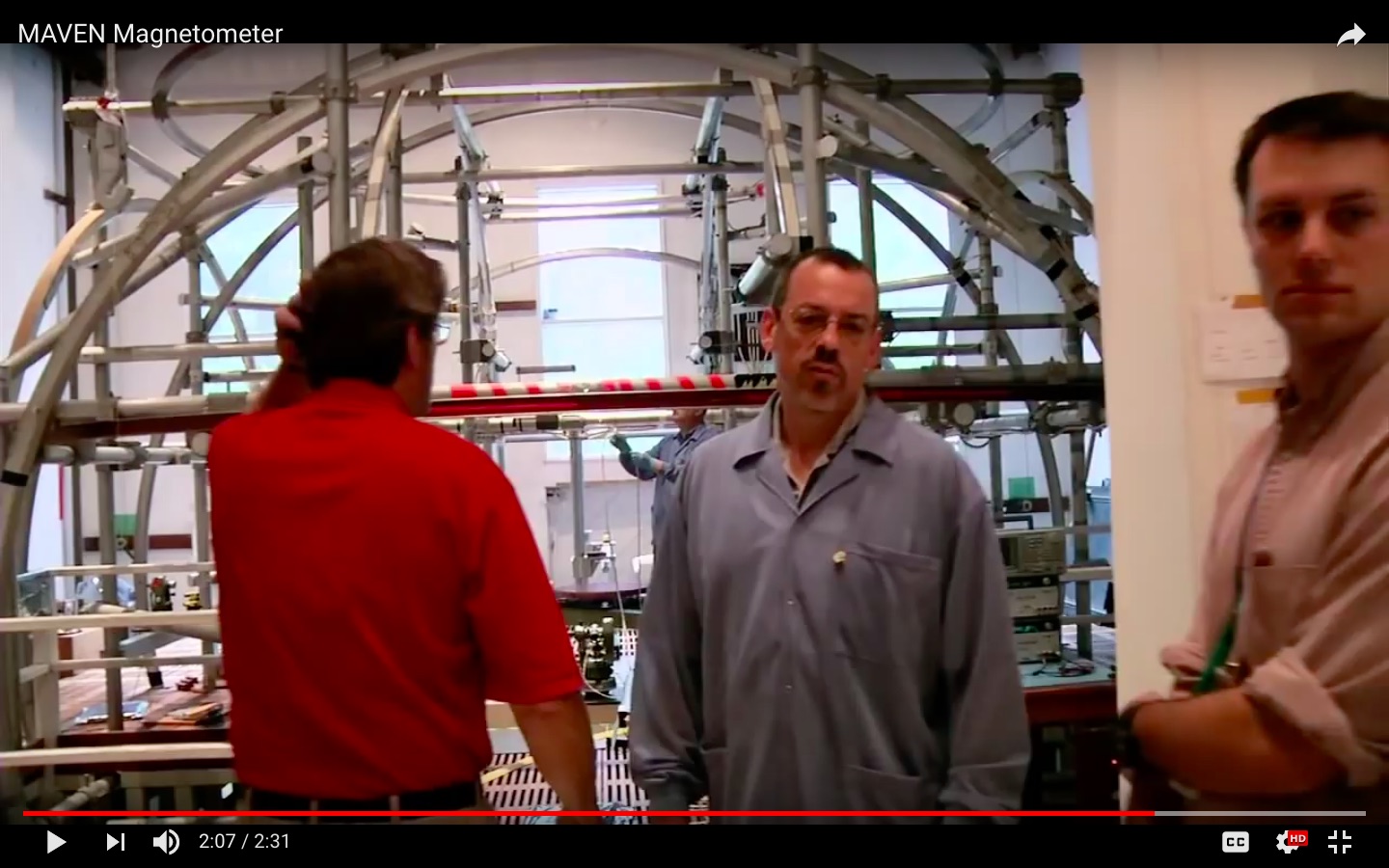I suspect the wooden sphere is a three-dimensional Helmholtz coil. A Helmholtz coil is a pair of circular coils, the radius of the coils should be equal to the distance of them. There is a coil pair for each of the three dimensions. Each coil should have the same number of windings.
There are circular groves visible filled with silicone or something similar. The groves contain the Helmholtz coils, one pair for each direction. An electrical current flowing through the coils generates the magnetic field. The Helmholtz pair of coils minimizes the nonuniformity of the field at the center of the coils. It is used as a magnetic field simulator for the magnetometer to do tests on Earth.

The two horizontal coils (marked with a green freehand line) generate the vertical component of the magnetic field.
The two coils marked with cyan for one horizontal magnetic field component.
The other horizontal magnetic field component coils marked with magenta, only one coil is visible. Each coil pair is vertical to the two other coil pairs.

*I used Python with Matplotlib for a plot of the coil configuration. All coil radii and all pair distances are equal. The green arrow shows the direction of the magnetic field caused by the green coils, the same is true for the colors magenta and cyan.
The sphere is symmetric in all three dimensions. The upper row of plots are the views vertical to each coil pair. Hidden lines are not removed.*
This configuration of Helmholtz coils may be used to compensate the local earth magnetic field and to generate a magnetic field of variable direction and intensity for a thorough test of the magnetometer to measure sensitivity and linearity in all three dimensions.
The sphere is made from wood to avoid any metal and unwanted magnetic fields. Wood does not conduct electrical currents, eddy currents are not possible. It is used for preflight tests only, the weight is no problem. If they used plexiglass or fiberglass for that, they would need a model made from wood to shape the fiberglass. It was easier to use the wood sphere itself as only one piece was necessary. They did not use aluminium because any metal should be avoided. The manufacture of the sphere was easier using wood than aluminium and the better stability of aluminium was not needed there. Using thick and heavy wood provided the necessary stability of the sphere to avoid any deformation during the tests and also during the manufacture of the sphere.
The Python code to draw the three axes Helmholtz coils. Run the code to turn the coils arrangement manually and look to it from all sides.
# This import registers the 3D projection, but is otherwise unused.
from mpl_toolkits.mplot3d import Axes3D # noqa: F401 unused import
import numpy as np
import matplotlib.pyplot as plt
plt.rcParams['legend.fontsize'] = 8
fig = plt.figure()
ax = fig.gca(projection='3d', proj_type = 'ortho')
# Prepare arrays u, v, w1, w2
r = 10.0
d = 0.5 * r
theta = np.linspace(-np.pi, np.pi, 100)
u, v = [r * f(theta) for f in (np.sin, np.cos)]
w1, w2 = np.full_like(theta, d), np.full_like(theta, -d)
ax.plot(u, v, w1, color = 'green') # coil in XY plane
ax.plot(u, v, w2, color = 'green')
ax.plot(w1, u, v, color = 'cyan') # coil in YZ plane
ax.plot(w2, u, v, color = 'cyan')
ax.plot(v, w1, u, color = 'magenta') # coil in XZ plane
ax.plot(v, w2, u, color = 'magenta')
ax.set_xlabel('X'), ax.set_ylabel('Y'), ax.set_zlabel('Z')
plt.show()






